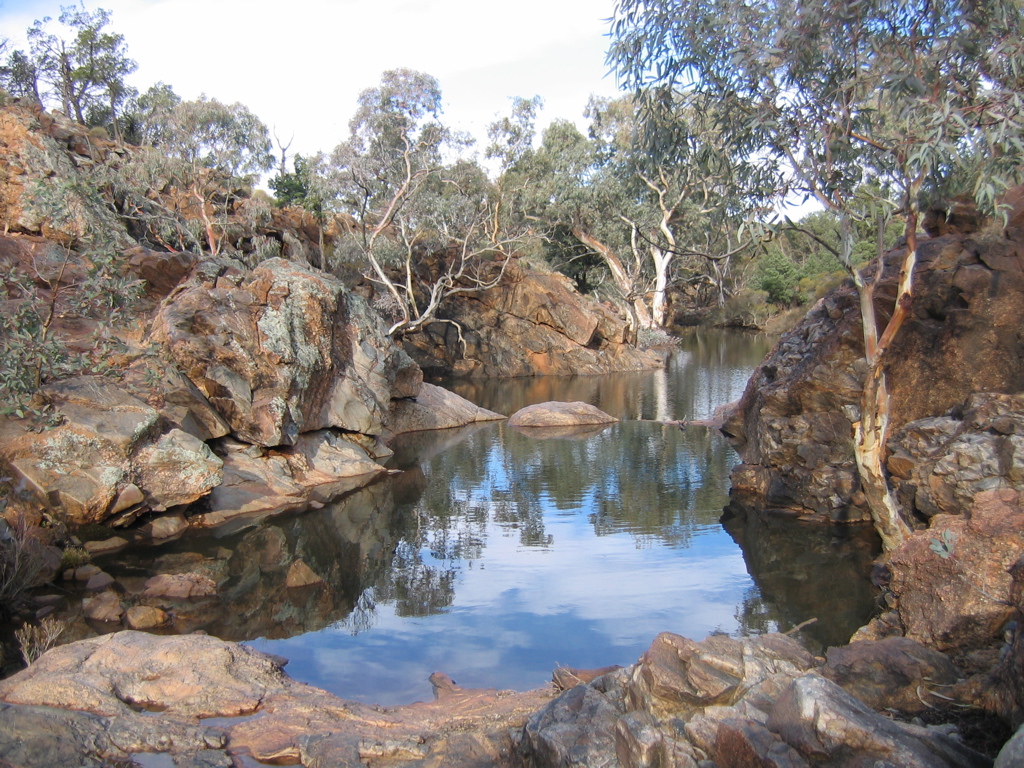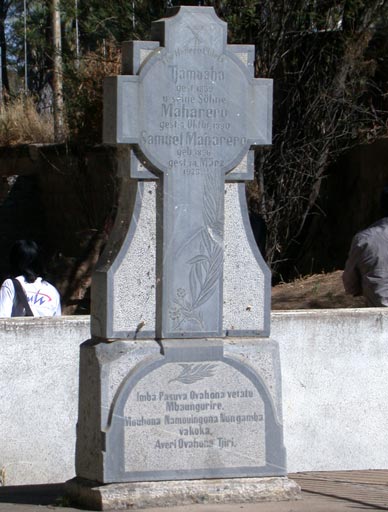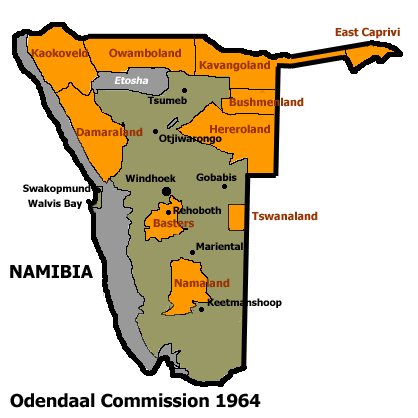|
Epukiro River
Epukiro is a cluster of small settlements in the remote eastern part of the Omaheke Region of Namibia, situated about northeast of the regional capital Gobabis. The centre of the populated area is the Catholic mission station. Epukiro had about 3,200 inhabitants in 1997, predominantly ethnic Tswana people, Tswana. Epukiro was since Namibian independence part of Otjinene Constituency. This constituency was split in 2004 and the new Epukiro Constituency was created. History The settlement was formed in 1902 when Roman Catholic Church bought the 30,000 ha farm ''Epukiro''. Namesake of the farm and the settlement is the Epukiro River, an ephemeral river which cuts the farm from west to east. A mission station was founded in 1904 by the Missionary Oblates of Mary Immaculate, a Catholic congregation. It was destroyed one year later during the Herero and Namaqua Genocide, Herero and Namaqua War. The German Empire, German colonial administration opened a post office in 1905. The Here ... [...More Info...] [...Related Items...] OR: [Wikipedia] [Google] [Baidu] |
Regions Of Namibia
Namibia uses regions as its first-level subnational administrative divisions. Since 2013, it has 14 regions which in turn are subdivided into 121 constituencies. Upon Namibian independence, the pre-existing subdivisions from the South African administration were taken over. Since then, demarcations and numbers of regions and constituencies of Namibia are tabled by delimitation commissions and accepted or declined by the National Assembly. In 1992, the ''1st Delimitation Commission'', chaired by Judge President Johan Strydom, proposed that Namibia should be divided into 13 regions. The suggestion was approved in the lower house, The National Assembly. In 2014, the ''4th Delimitation Commission'' amended the number of regions to fourteen. Regions 1990–1992 See also *Constituencies of Namibia Each of the 14 regions of Namibia is further subdivided into electoral constituencies. The size of the constituencies varies with the size and population of ... [...More Info...] [...Related Items...] OR: [Wikipedia] [Google] [Baidu] |
Ephemeral
Ephemerality (from the Greek word , meaning 'lasting only one day') is the concept of things being transitory, existing only briefly. Academically, the term ephemeral constitutionally describes a diverse assortment of things and experiences, from digital media to types of streams. "There is no single definition of ephemerality". With respect to unique performances, for example, it has been noted that " hemerality is a quality caused by the ebb and flow of the crowd's concentration on the performance and a reflection of the nostalgic character of specific performances". Because different people may value the passage of time differently, ephemerality may be a relative, perceptual concept: "In brief, what is short-lived may not be the object itself, but the attention we afford it".Ronald Beiner, ''Political Philosophy: What It Is and Why It Matters'' (2014), p. 10. Ephemerality and nature Geographical features An ephemeral stream is that which only exists following precipitation. ... [...More Info...] [...Related Items...] OR: [Wikipedia] [Google] [Baidu] |
Maharero
Maharero kaTjamuaha (Otjiherero: ''Maharero, son of Tjamuaha'', short: Maharero; 1820 – 7 October 1890) was one of the most powerful paramount chiefs of the Herero people in South-West Africa, today's Namibia. Early life Maharero, was born about 1820 at Okahandja. In 1843 he went with his father Tjamuaha to Windhoek to stay with Jonker Afrikaner, Captain of the Oorlam Afrikaners. Tjamuaha was an ally of Jonker Afrikaner until his death in 1861, albeit in a subordinate position. Maharero a leader of Ovaherero community in (1861-1890) was born in ca 1820 at Otjikune near Okahandja and he was the son of Tjamuaha and his chief wife Tjorozumo. He had several brothers and half-brothers, amongst them were Kavezeri, Kariteova, Kavikunua and Rijarua. Like his father, Maharero became an ally of Jonker Afrikaner in 1843. As from 1863 onwards, he refused to accept the dominance of the Afrikaners and was recognized by both Herero’s and the European in the country as the representat ... [...More Info...] [...Related Items...] OR: [Wikipedia] [Google] [Baidu] |
Tjamuaha
Tjamuaha (also: Tjamuaha waTjirwe, literally en, Tjamuaha, son of Tjirwe, born ca. 1790 in Otjikune, died December 1861 in Okahandja) was a chief of the Herero people in South-West Africa, today's Namibia, and the father of Maharero. He was a close ally and subordinate of Jonker Afrikaner, Captain of the Oorlam Afrikaners, and stayed with him in Windhoek Windhoek (, , ) is the capital and largest city of Namibia. It is located in central Namibia in the Khomas Highland plateau area, at around above sea level, almost exactly at the country's geographical centre. The population of Windhoek in 202 ... for most of his chieftaincy. With Tjamuaha's death, hostilities started between the Nama people and the Herero. References Notes Literature * Herero people 1790s births 1861 deaths Year of birth uncertain People from Otjozondjupa Region {{Namibia-bio-stub ... [...More Info...] [...Related Items...] OR: [Wikipedia] [Google] [Baidu] |
Aminuis
Aminuis is a cluster of small settlements in the remote eastern part of the Omaheke Region of Namibia, located about 500 km east of Windhoek. It is the district capital of the Aminuis electoral constituency. Economy and Infrastructure Aminuis features a post office and police station. Many government ministries have dependencies in the settlement. The Catholic Church operates a parish, ''Our Lady of Perpetual Succour'' in Aminuis; it belongs to the Archdiocese of Windhoek. The Roman Catholic Church is the oldest church in Aminuis. Other churches include Oruuano Church, Zion Christian Church (ZCC), St Phellips, and a Born Again church. The village is riddled by poverty and joblessness. The main economic activity is subsistence farming with cattle, goats and sheep but frequent droughts make this difficult. The Tswana people used to mine salt from a nearby pan but went out of business after they could not meet the demand that it be iodised. Education There are a number of s ... [...More Info...] [...Related Items...] OR: [Wikipedia] [Google] [Baidu] |
San People
The San peoples (also Saan), or Bushmen, are members of various Khoe, Tuu, or Kxʼa-speaking indigenous hunter-gatherer cultures that are the first cultures of Southern Africa, and whose territories span Botswana, Namibia, Angola, Zambia, Zimbabwe, Lesotho and South Africa. In 2017, Botswana was home to approximately 63,500 San people (roughly 2.8% of the population) making it the country with the highest number of San people. Definition The term "San" has a long vowel and is spelled Sān (in Khoekhoegowab orthography). It is a Khoekhoe exonym with the meaning of "foragers" and was often used in a derogatory manner to describe nomadic, foraging people. Based on observation of lifestyle, this term has been applied to speakers of three distinct language families living between the Okavango River in Botswana and Etosha National Park in northwestern Namibia, extending up into southern Angola; central peoples of most of Namibia and Botswana, extending into Zambia and Zimbabwe ... [...More Info...] [...Related Items...] OR: [Wikipedia] [Google] [Baidu] |
Ovambanderu
The Mbanderu (''Ovambanderu'') are a population inhabiting eastern parts of Namibia and western parts of Botswana. They speak Herero language, Mbanderu (''Otjimbanderu)'' a Bantu language History and Culture Etymology While earlier theories of the meaning of the word ''mbanderu'' stated "People of the Reed bed, reed" (''mbandu'': people and ': reed), the explanation common today is that ''mbanderu'' literally means 'fighters of old'. Origins Results from investigations about similarities in their music point to East Africa as the origin of the all Bantu peoples, Bantu tribes that today inhabit Namibia. The Ovambo people left this area first and settled in the north of today's Namibia, the Herero people left after that, and the Ovambanderu migrated last. In the 19th century the Ovambanderu had reached Angola and moved from there into Kaokoland and Ovamboland but got into fights with already resident Herero people, Herero tribes and subsequently settled in the eastern part of Sout ... [...More Info...] [...Related Items...] OR: [Wikipedia] [Google] [Baidu] |
Hereroland
Hereroland was the first bantustan in South West Africa (present day Namibia), intended by the apartheid government to be a self-governing homeland for the Herero people. It was set up in 1968. Hereroland, like other homelands in South West Africa, was abolished in May 1989 at the start of the transition to independence. See also *Apartheid *Leaders of Hereroland The Herero people of Namibia are ruled by traditional leaders, the highest office is that of the ''Paramount Chief''. During part of the South African apartheid administration in South West Africa, when Hereroland was a bantustan (designated area f ... References History of Namibia Bantustans in South West Africa Herero people States and territories established in 1968 States and territories disestablished in 1989 1968 establishments in South West Africa {{Namibia-hist-stub ... [...More Info...] [...Related Items...] OR: [Wikipedia] [Google] [Baidu] |
South Africa
South Africa, officially the Republic of South Africa (RSA), is the southernmost country in Africa. It is bounded to the south by of coastline that stretch along the South Atlantic and Indian Oceans; to the north by the neighbouring countries of Namibia, Botswana, and Zimbabwe; and to the east and northeast by Mozambique and Eswatini. It also completely enclaves the country Lesotho. It is the southernmost country on the mainland of the Old World, and the second-most populous country located entirely south of the equator, after Tanzania. South Africa is a biodiversity hotspot, with unique biomes, plant and animal life. With over 60 million people, the country is the world's 24th-most populous nation and covers an area of . South Africa has three capital cities, with the executive, judicial and legislative branches of government based in Pretoria, Bloemfontein, and Cape Town respectively. The largest city is Johannesburg. About 80% of the population are Black South Afri ... [...More Info...] [...Related Items...] OR: [Wikipedia] [Google] [Baidu] |
South-West Africa
South West Africa ( af, Suidwes-Afrika; german: Südwestafrika; nl, Zuidwest-Afrika) was a territory under South African administration from 1915 to 1990, after which it became modern-day Namibia. It bordered Angola (Portuguese colony before 1975), Botswana ( Bechuanaland before 1966), South Africa, and Zambia (Northern Rhodesia before 1964). Previously the German colony of South West Africa from 1884–1915, it was made a League of Nations mandate of the Union of South Africa following Germany's defeat in the First World War. Although the mandate was abolished by the United Nations in 1966, South African control over the territory continued despite its illegality under international law. The territory was administered directly by the South African government from 1915 to 1978, when the Turnhalle Constitutional Conference laid the groundwork for semi-autonomous rule. During an interim period between 1978 and 1985, South Africa gradually granted South West Africa a limited for ... [...More Info...] [...Related Items...] OR: [Wikipedia] [Google] [Baidu] |
World War I
World War I (28 July 1914 11 November 1918), often abbreviated as WWI, was one of the deadliest global conflicts in history. Belligerents included much of Europe, the Russian Empire, the United States, and the Ottoman Empire, with fighting occurring throughout Europe, the Middle East, Africa, the Pacific, and parts of Asia. An estimated 9 million soldiers were killed in combat, plus another 23 million wounded, while 5 million civilians died as a result of military action, hunger, and disease. Millions more died in genocides within the Ottoman Empire and in the 1918 influenza pandemic, which was exacerbated by the movement of combatants during the war. Prior to 1914, the European great powers were divided between the Triple Entente (comprising France, Russia, and Britain) and the Triple Alliance (containing Germany, Austria-Hungary, and Italy). Tensions in the Balkans came to a head on 28 June 1914, following the assassination of Archduke Franz Ferdin ... [...More Info...] [...Related Items...] OR: [Wikipedia] [Google] [Baidu] |
Ovaherero
The Herero ( hz, Ovaherero) are a Bantu ethnic group inhabiting parts of Southern Africa. There were an estimated 250,000 Herero people in Namibia in 2013. They speak Otjiherero, a Bantu language. Though the Herero primarily reside in Namibia, there are also significant populations in Botswana and Angola. In Botswana, the Hereros or Ovaherero are mostly found in Maun and some villages surrounding Maun. These villages among others are Sepopa, Toromuja, Karee and Etsha. Some of them are at Mahalapye. In the South eastern part of Botswana they are at Pilane. There are also a few of them in the Kgalagadi South, that is Tsabong, Omawaneni, Draaihoek and Makopong Villages. Overview Unlike most Bantu, who are primarily subsistence farmers,Immaculate N. Kizza, ''The Oral Tradition of the Baganda of Uganda: A Study and Anthology of Legends, Myths, Epigrams and Folktales'' p. 21: "The Bantu were, and still are, primarily subsistence farmers who would settle in areas, clear land, or ... [...More Info...] [...Related Items...] OR: [Wikipedia] [Google] [Baidu] |


